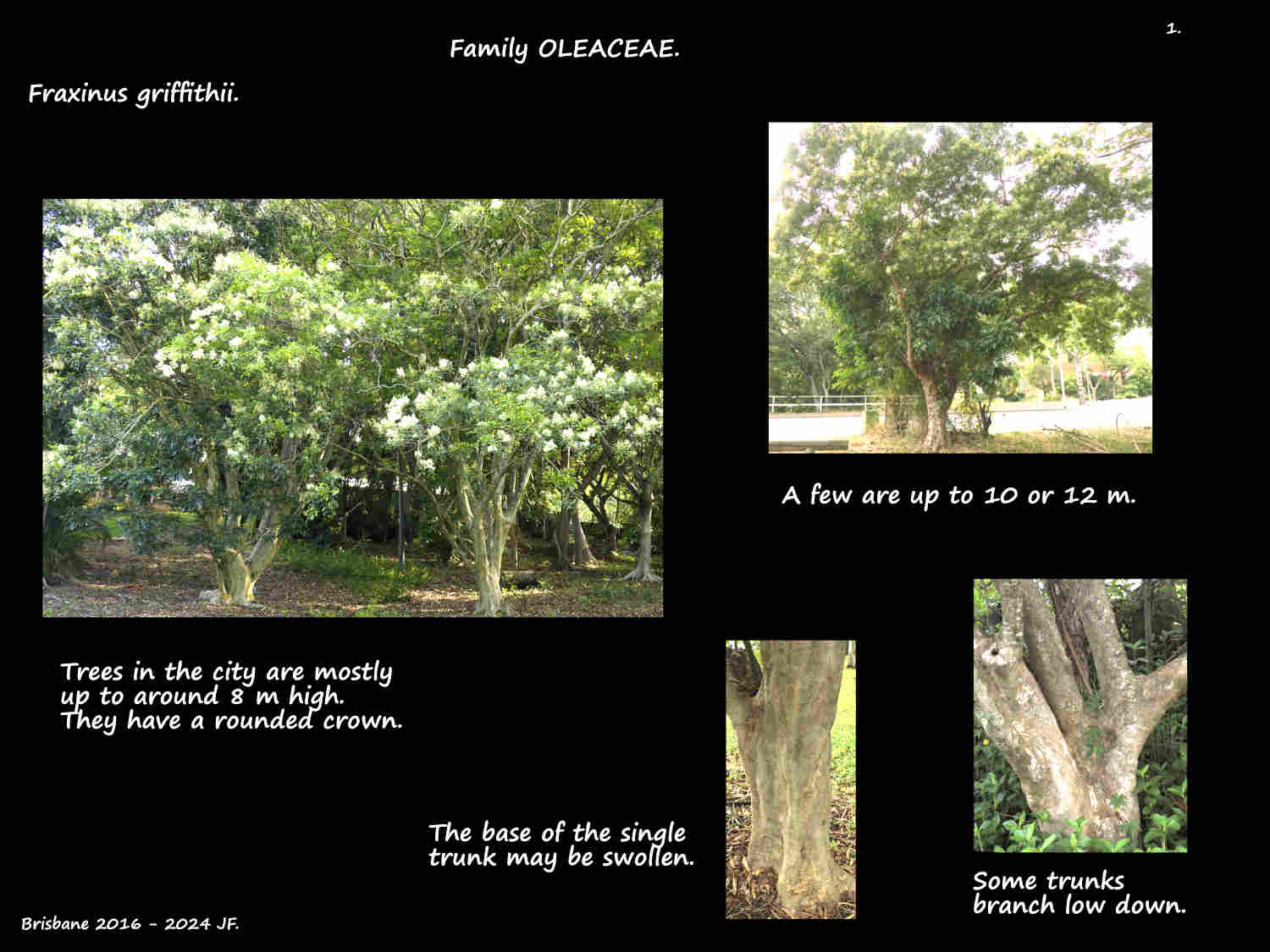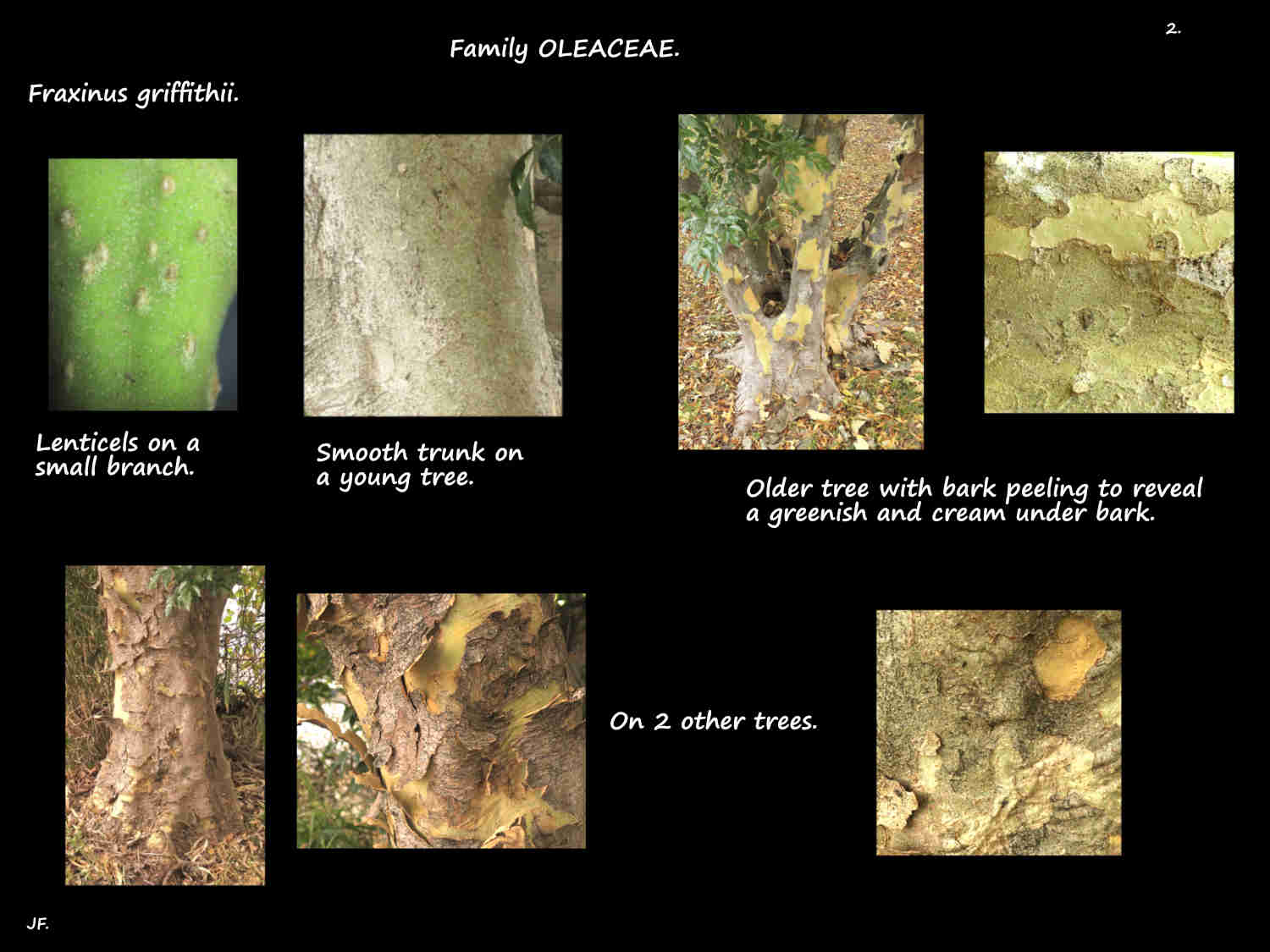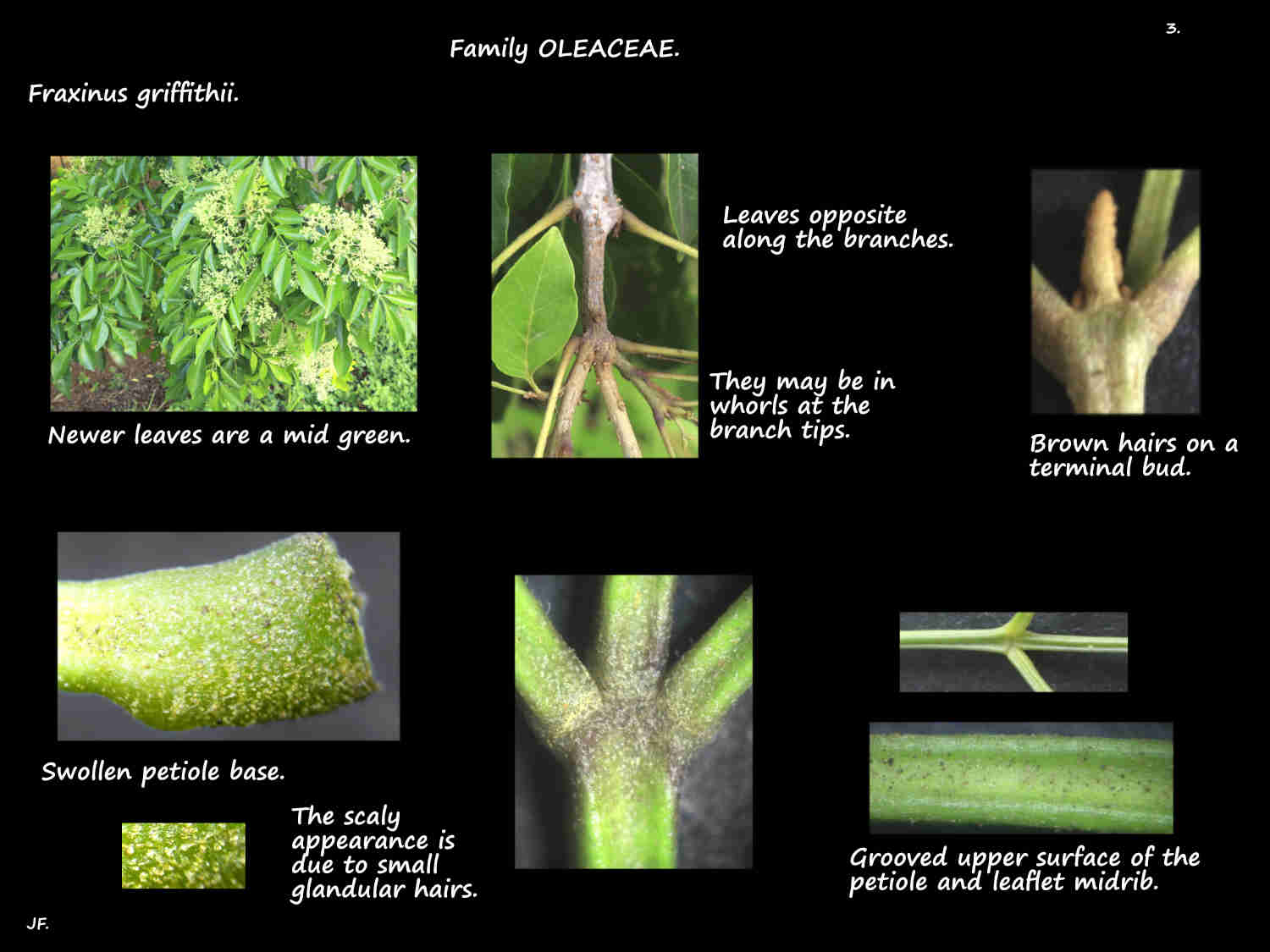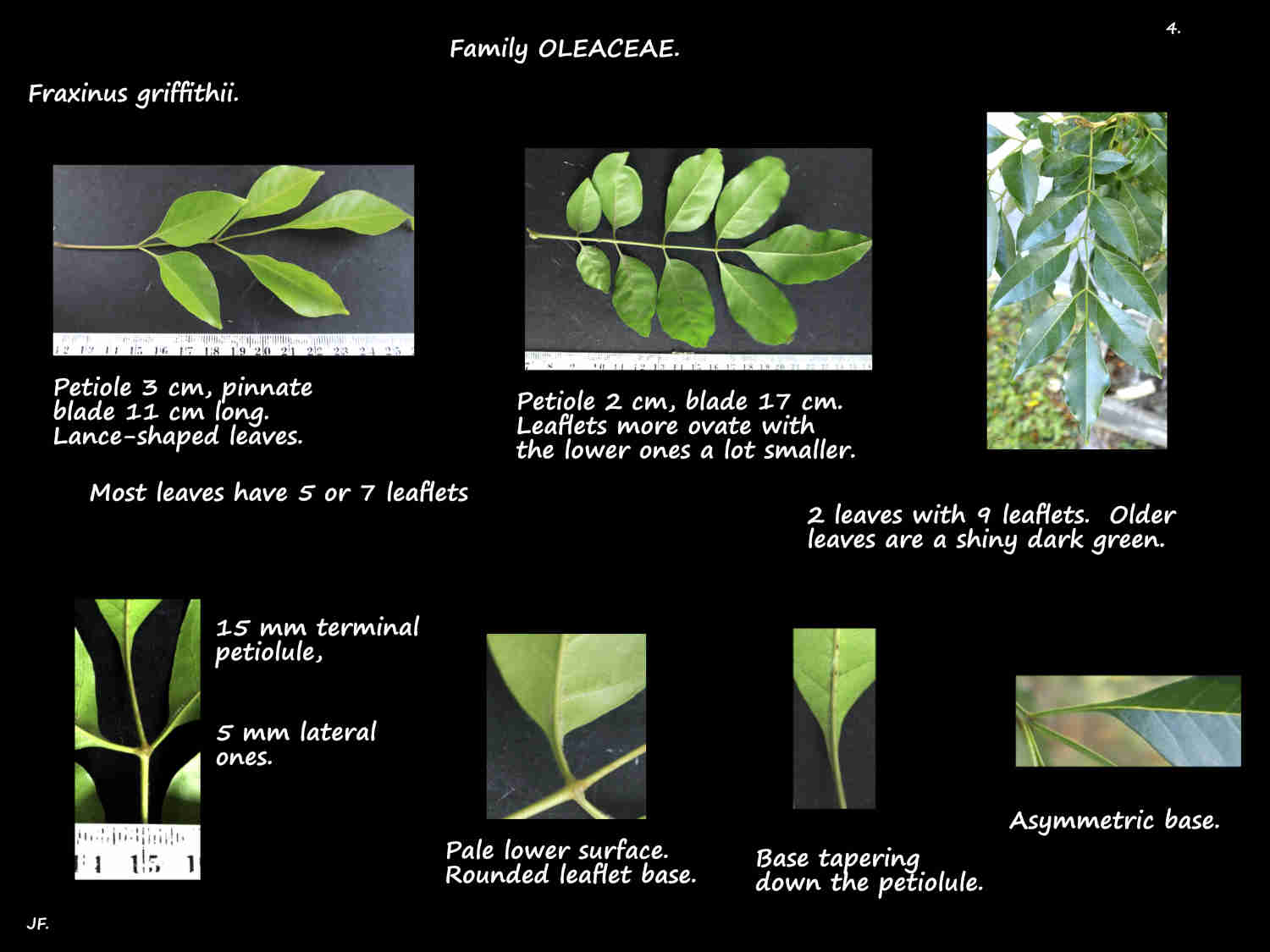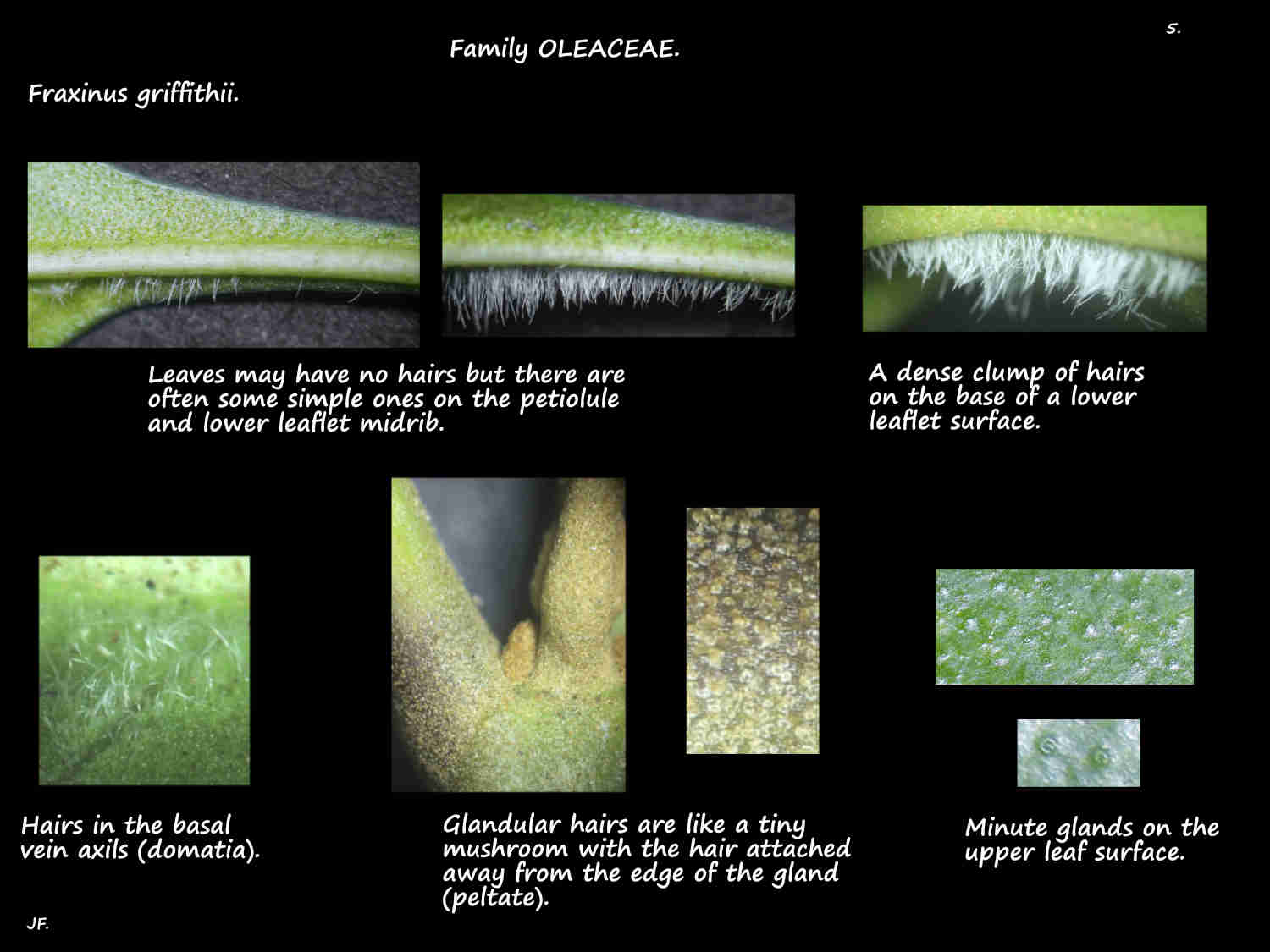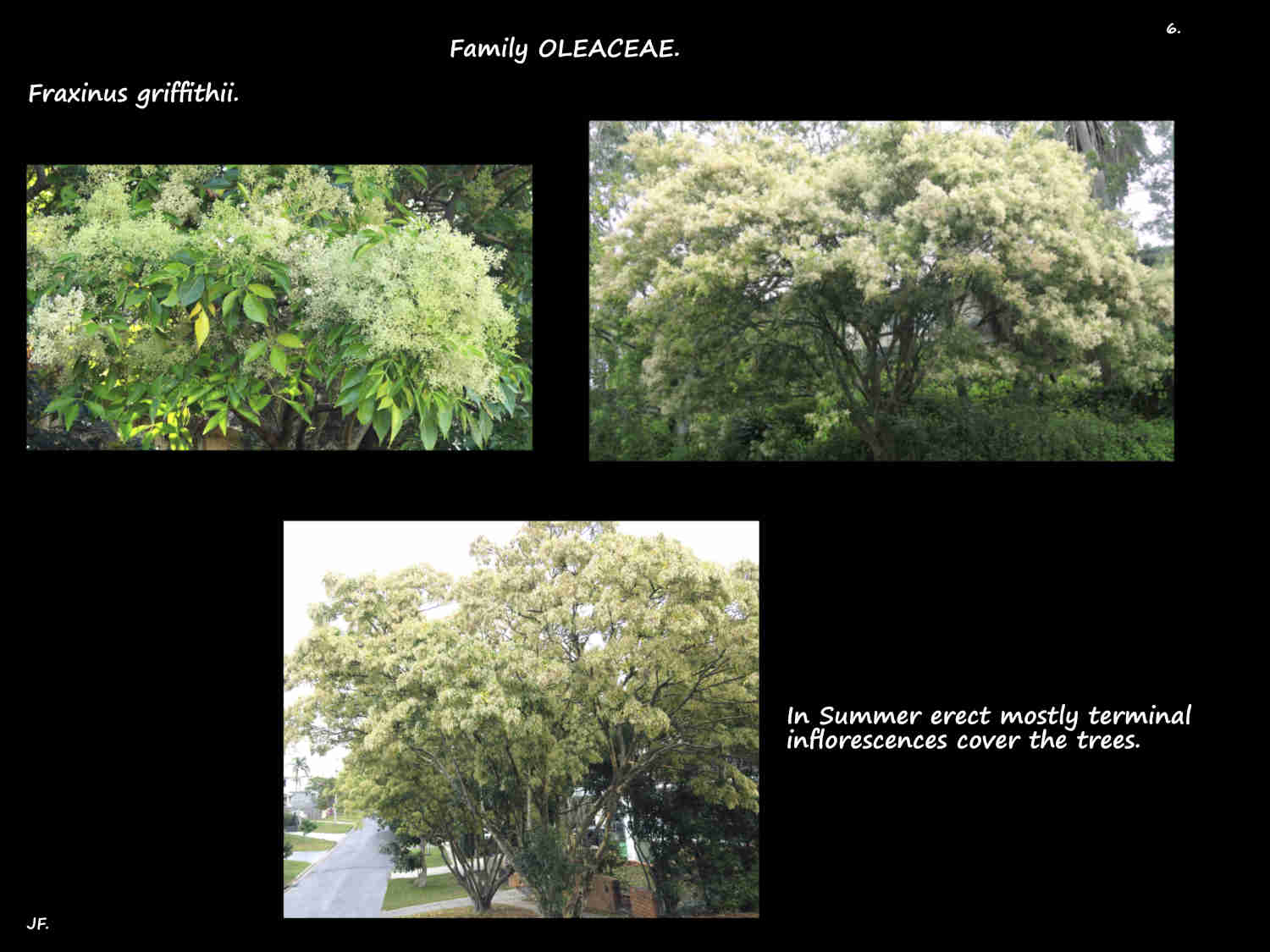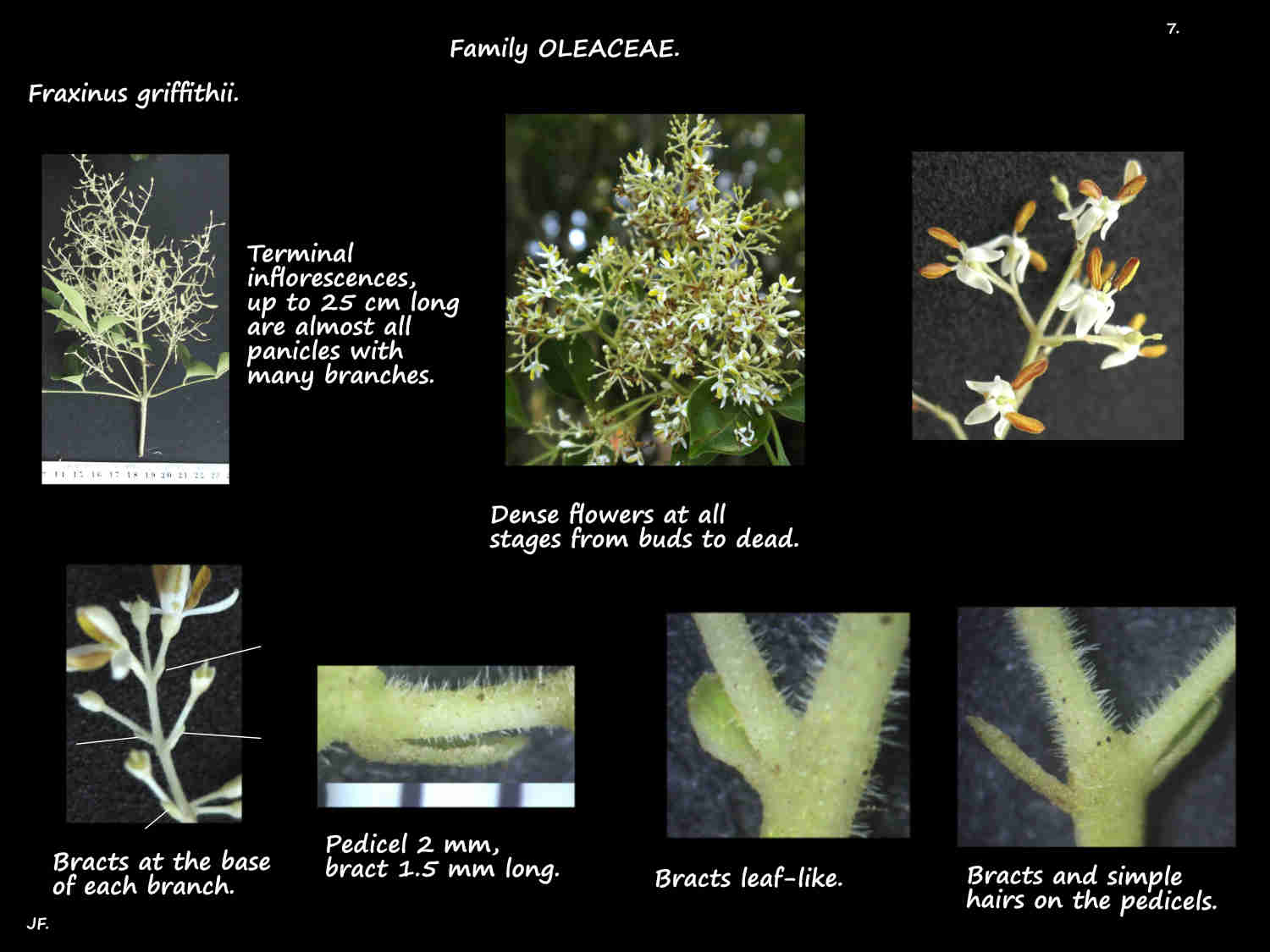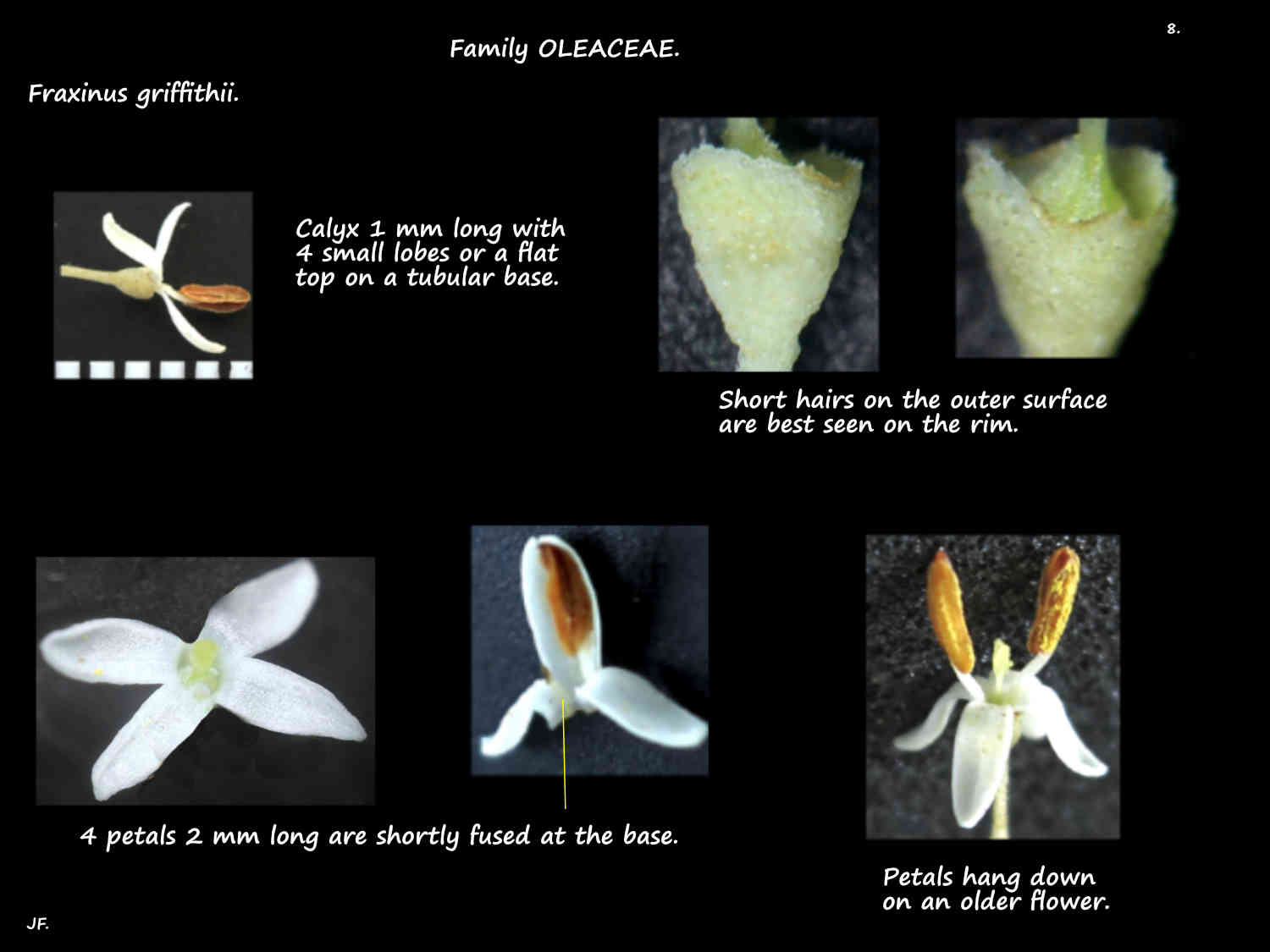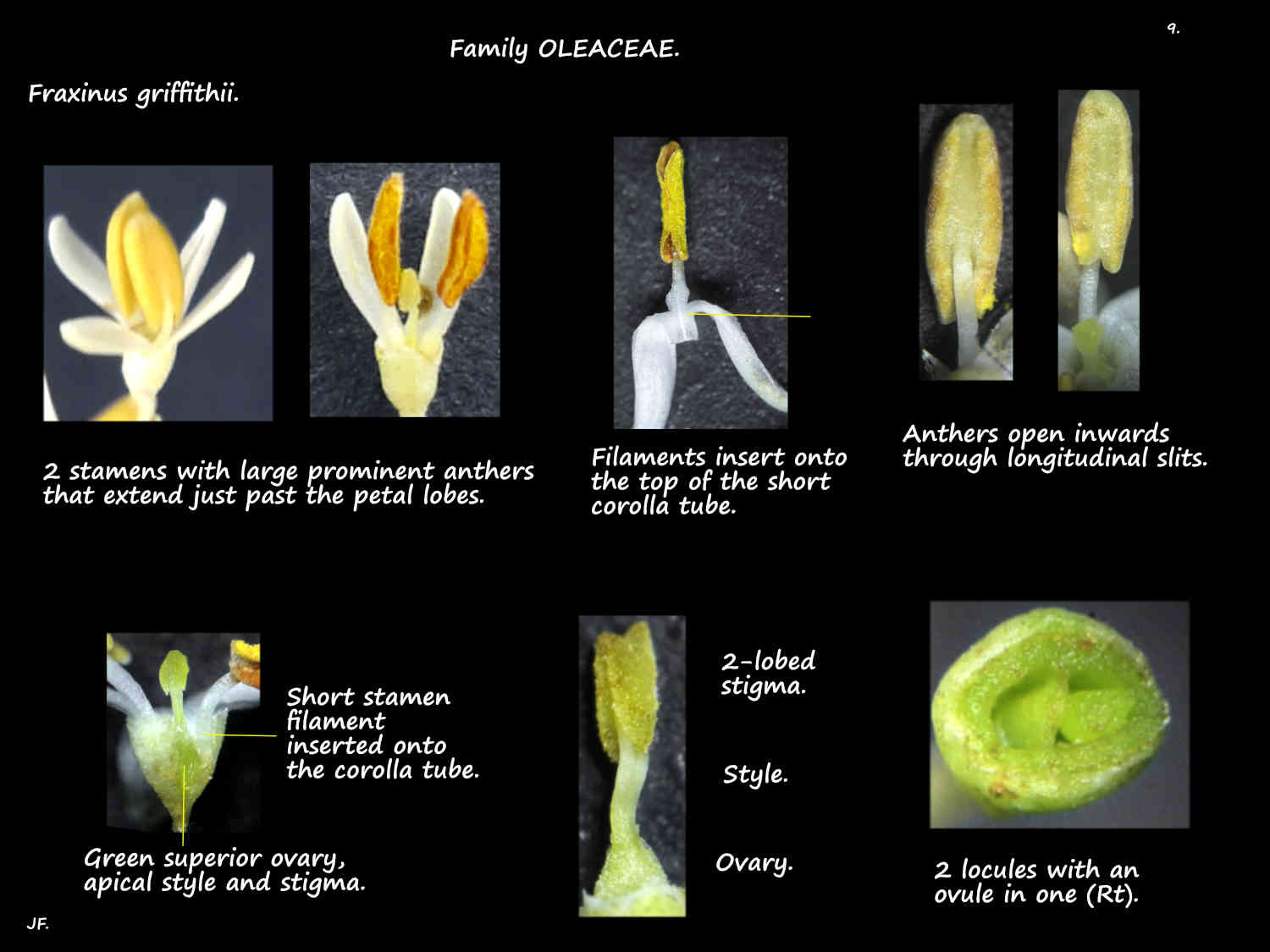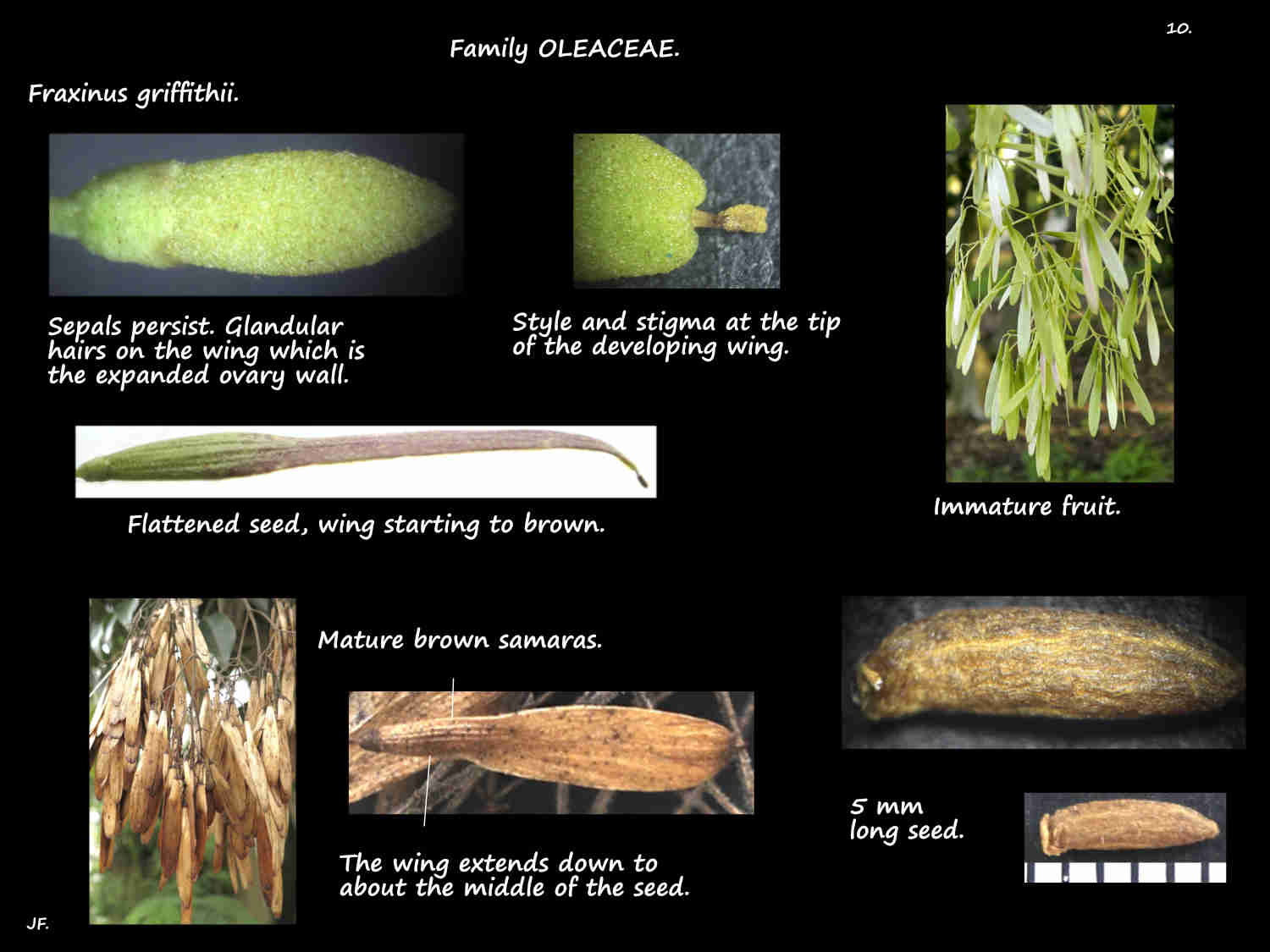Fraxinus griffithii.
The Evergreen, Griffith’s or Himalayan ash is in Family Oleaceae > Tribe Oleeae > Subtribe Fraxininae.
Native to China and the Malayan area it is a common street tree in Brisbane.
It is naturalised in areas of S.E. Queensland and can become an invasive weed.
Trees are 8 to 10 m high in the city but in the wild they can each 50 m.
They can sucker from the roots.
Young twigs have fine hairs but these are soon lost.
The smooth greyish bark on young trunks becomes mottled on older trees.
Leaves are opposite along the stems but at the branch ends they appear to be in whorls of three.
The shiny dark green leaves, up to 25 cm long are on a petiole up to 8 cm long.
The blades are pinnate with most leaves having 5 or 7 leaflets but some have 9 or 11.
The upper surface of the petiole and blade midrib are grooved.
The lance-shaped to ovate leaflets are up to 10 cm long by 5 cm wide.
Leaflets are on stalks (petiolules) up to 1 cm long with the single terminal one the longest.
The tip is pointed, the edge smooth and the base can be rounded, tapering or unequal (oblique).
There may be no hairs or a row of simple white ones on either side of the petiole.
They extend onto the base of the blade and along the lower midrib for a short distance.
The petiole, especially the swollen base, is covered in minute brown scale-like glands.
The upper surface of the leaflets may have pale scattered glands.
Terminal inflorescences are branched clusters (panicles) up to 25 cm long.
At the base of each branch is a persistent leaf-like bract up to 1 cm long.
The bisexual flowers are on pedicels around 3 mm long.
There are hairs on the stems, pedicels and bracts.
The sepal bases are fused into a tubular calyx 1 mm long with 4 short lobes or an almost flat top.
There may be some hairs on the outer surface.
The 2 mm long corolla is similar with a basal tube and 4 white lobes.
There are 2 stamens and a superior ovary with 2 locules.
The fruit is a spatula-shaped samara up to 4 cm long and 5 mm wide.
At the base is a single seed with a flattened wing formed from the expanded ovary wall.
The green then papery brown wing extends to about the middle of the seed (a nutlet).
J.F.

